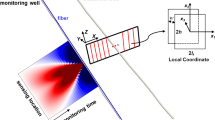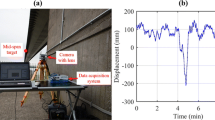Abstract
This paper describes an approach to the construction of three-dimensional stochastic models for intelligent systems exploring an underwater environment. Important characteristics shared by such applications are: (1) real-time constraints; (2) unstructured, three-dimensional terrain; (3) high-bandwidth sensors providing redundant, overlapping coverage; (4) lack of prior knowledge about the environment; and (5) inherent inaccuracy or ambiguity in sensing and interpretation. The paper develops an underlying theory of stochastic backprojection and demonstrates how such an approach satisfies these five needs for undersea robotics.
Models are cast as three-dimensional spatial decompositions of stochastic feature vectors. A numerical approach to incorporating new sensor information is derived from an incremental adaptation of the summation method for image reconstruction. Error and ambiguity are accounted for by blurring a spatial projection of remote-sensor data before combining them stochastically with the model. By exploiting the redundancy in high-bandwidth sensing, model certainty and resolution are enhanced as more data accumulate. In the case of a three-dimensional profiling sonar, the model converges to a “fuzzy” surface distribution from which a deterministic surface map is extracted.
To verify the fundamental properties of stochastic backprojection and the resulting models, computer simulations are used to demonstrate: impulse and ramp responses; mitigation of artifacts caused by deterministic processing; incremental increase in accuracy and reduction of uncertainty; and convergence. Two examples illustrate how this approach has been successfully applied in the field for three-dimensional modeling of a sunken shipwreck by a remote undersea vehicle and for backscatter modeling of undersea terrain.
Similar content being viewed by others
References
Arnold, J.B. III, Fleshman, G.F., Peterson, C.E., Stewart, W.K., Watts, G.P., and Weldon, C.P. 1992. U.S.S. Monitor: Results from the 1987 season. Historical Archaeology, 26(4).
Barratt, J., Bonasso, P., Stewart, K., and Yoerger, D. 1994. Experiments with a Semi-Autonomous Underwater Vehicle, Mitre Corporation, McLean, VA, Tech. Rept. MTR-93W0000209.
Beckerman, M. and Oblow, E.M. 1990. Treatment of systematic errors in the processing of wide-angle sonar sensor data for robotic navigation. IEEE Trans. Robotics Automat., 6(2):137–145.
Caccia, M., Bono, R., and Veruggio, G. 1985. 2-d acoustic world reconstruction. In Proc. Ninth Intnl. Symp. on Unmanned Untethered Submersible Technology, Durham, NH, pp. 299–305.
Chantler, M. and Reid, C. 1991. Local scene analysis and interpretation for robotic manipulation. In Proc. Seventh Intnl. Symp. on Unmanned Untethered Submersible Technology, Durham, NH, pp. 351–358.
Cox, I.J. and Leonard, J.J. 1994. Modelling a dynamic environment using a Bayesian multiple hypothesis approach. Artificial Intell., 66:311–344.
Das, Y. and Boerner, W.M. 1978. On radar target shape estimation using algorithms for reconstruction from projections. IEEE Trans. Antenn. Prop., AP-26(2):274–279.
Denton, R.V., Rockmore, A.J., Friedlander, B., and Malin, J.S. 1978. An image reconstruction approach to target association. In Proc. IEEE Asilomar Conf. Circuit. Sys. Comput., Asilomar, CA, pp. 304–308.
Dunn, S. and Blidberg, D.R. 1989. On the threshold of maturity-A summary. In Proc. Sixth Intnl. Symp. on Unmanned Untethered Submersible Technology, Durham, NH, pp. 573–574.
Horn, B.K.P. 1978. Density reconstruction using arbitrary ray-sampling schemes. Proc. IEEE, 66(5):551–562.
Kastens, K.A. and Ryan, W.B.F. 1986. Structural and volcanic expression of a fast slipping ridge-transform-ridge-plate boundary: SeaMARC I and photographic surveys at the Clipperton Transform Fault. J. Geophys. Res., 91(B3):3469–3488.
Kosalos, J.G. and Chayes, D. 1983. A portable system for ocean bottom imaging and charting. In Proc. MTS Oceans Conf., Washington, DC, pp. 649–656.
Mersereau, R.M. and Oppenheim, A.V. 1974. Digital reconstruction of multidimensional signals from their projections. Proc. IEEE, 62(10):1319–1338.
Moravec, H.P. and Elfes, A. 1985. High resolution maps from wide angle sonar. In Proc. IEEE Conf. Robotics Automat., pp. 116–121.
Norton, S.J. and Linzer, M. 1979a. Ultrasonic reflectivity tomography: Reconstruction with circular transducer arrays. In Ultrasonic Imaging 1, Academic Press: New York, pp. 154–184.
Norton, S.J. and Linzer, M. 1979b. Ultrasonic reflectivity imaging in three dimensions: Reconstruction with spherical transducer arrays. In Ultrasonic Imaging 1, Academic Press: New York, pp. 210–231.
Rockmore, A.J., Denton, R.V., and Friedlander, B. 1979. Direct three-dimensional image reconstruction. IEEE Trans. Antenn. Prop., AP-27(2):239–241.
Rockmore, A.J. 1981. Multi-array surveillance processing using image reconstruction. In Proc. IEEE Asilomar Conf. Circuit. Syst, Comput., Asilomar, CA, pp. 119–241.
Rosen, C. and Nilsson, N.J. 1968. Application of intelligent automata to reconnaissance. Rome Air Development Center, Air Force Systems Command, Tech. Report RADC-TR-67-657.
Rosenblum, L. and Kamgar-Parsi, B. 1992. 3-D reconstruction of small underwater objects using high-resolution sonar data. In Proc. Symp. on Autonomous Underwater Vehicle Technology, Durham, NH, pp. 228–235.
Singh, H. 1995. An entropic framework for AUV sensor modeling. Massachusetts Institute of Technology and Woods Hole Oceanographic Institution, Woods Hole, MA, Ph.D. Thesis.
Singh, H., Yoerger, D., Bachmayer, R., Bradley, A., and Stewart, W.K. 1985. Sonar mapping with the Autonomous Benthic Explorer (ABE). In Proc. Ninth Intnl. Symp. Unmanned Untethered Submersible Technology, pp. 367–375.
Stewart, W.K. 1988. Multisensor modeling underwater with uncertain information. Massachusetts Institute of Technology and Woods Hole Oceanographic Institution, Woods Hole, MA, Ph.D. Thesis.
Stewart, W.K. 1989. Three-dimensional modeling of seafloor backscatter from sidescan sonar for autonomous classification and navigation. In Proc. Symp. Unmanned Untethered Submersible Technol., Durham, NH, pp. 372–392.
Stewart, W.K. 1990. A model-based approach to 3-d imaging and mapping underwater. ASME J. Offshore Mech. Arctic Eng., 112:352–356.
Stewart, W.K., Chu, D., and Tang, X. 1993. A preliminary study of shallow-water sonar issues: Signal motion loss and reverberation noise. Woods Hole Oceanographic Institution, Woods Hole, MA, Tech. Rept. WHOI-93–41.
Stewart, W.K., Chu, D., Malik, S., Lerner, S., and Singh, H. 1994. Quantitative seafloor characterization using a bathymetric sidescan sonar, IEEE J. Oceanic Eng., 19(4):599–610.
Urick, R.J. 1975. Principles of Underwater Sound, McGraw-Hill: New York, NY.
Yongkuan, L. 1992. AUVs' trends over the world in the future decade. In Proc. Symp. on Autonomous Underwater Vehicle Technology, Durham, NH, pp. 116–127.
Author information
Authors and Affiliations
Rights and permissions
About this article
Cite this article
Stewart, W.K. Three-dimensional stochastic modeling using sonar sensing for undersea robotics. Auton Robot 3, 121–143 (1996). https://doi.org/10.1007/BF00141151
Issue Date:
DOI: https://doi.org/10.1007/BF00141151




